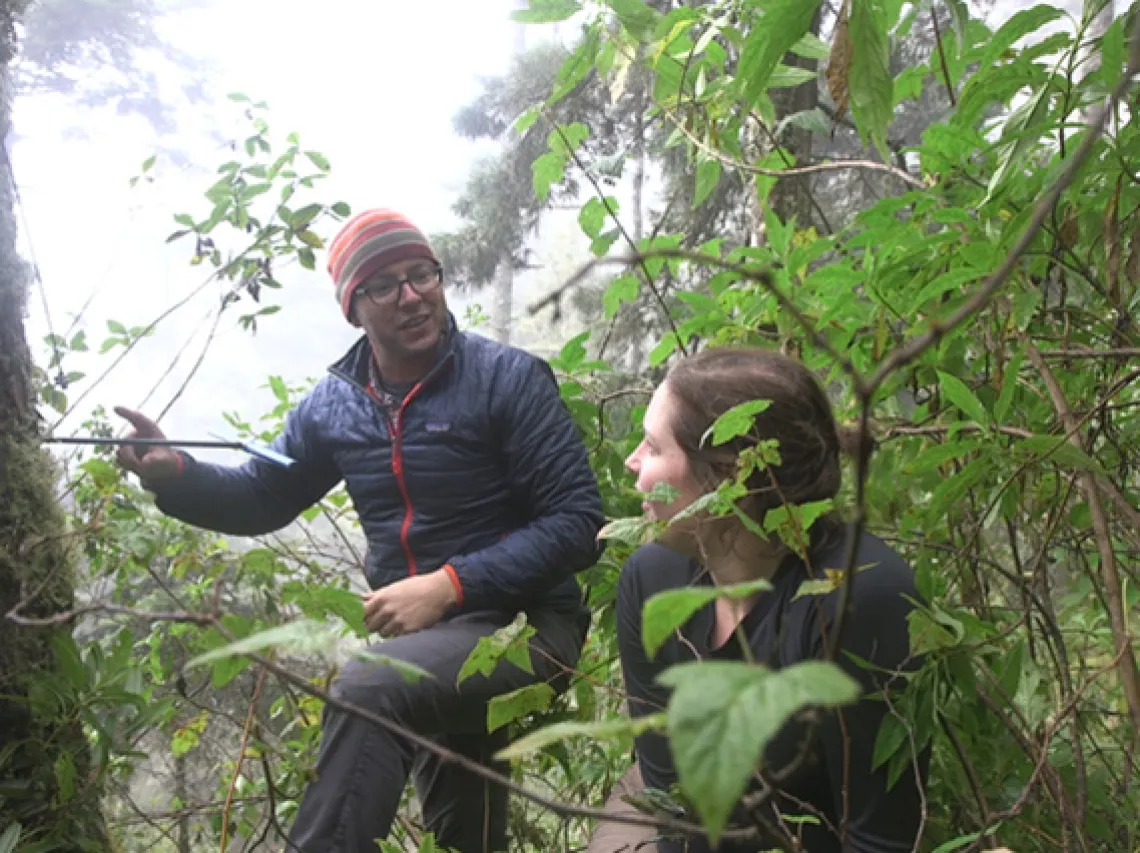When Reporting Climate-Driven Human Migration, Place Matters
University of Arizona geographers have shown that the conversation around migration out of Central American countries should be more nuanced and based on local trends rather than regional expectations.

Professor Kevin Anchukaitis and graduate student Talia Anderson coring trees in Guatemala.
Photo by Mari Cleven
A quick Google search for "What is driving migration from Central America?" reveals that nearly all of the top hits claim climate change as a major catalyst for the mass movement of people out of their home countries. University of Arizona climate researchers, however, have shown that the reality is much more nuanced.
“We were seeing articles in big-name media saying migration from Central America is being driven by climate change and yet, we were looking at these and asking, where is the evidence?” said Kevin Anchukaitis, professor in the School of Geography and Development in the College of Social and Behavioral Sciences.
To nail down the reality, a team led by Anchukaitis analyzed 40 years of daily weather records from El Salvador, Guatemala, Nicaragua and Honduras – especially the Central American region known as the "Dry Corridor."
They focused on changes in the timing and intensity of the Central American Midsummer Drought, an annual dip in rainfall totals during the summer months. Millions of families in the region plant crops in rhythm with the annual peaks and troughs in rainfall.
“If rainfall comes at a different time, or if it’s less than normal, it could result in a crop failure and food insecurity,” said geography graduate student Talia Anderson, lead author on the paper that was recently published in Environmental Research Letters.
Anderson analyzed a combination of daily satellite and rain gauge estimates, allowing her to look at weather patterns continuously across space over the past four decades.
The findings revealed a complex pattern across the region. In most places, the researchers found insignificant changes in rainfall patterns over the past 40 years. Some local areas, however, changed significantly: Some have gotten drier, while others got wetter. In some places the Midsummer Drought starts earlier or ends later, but elsewhere the researchers found no changes.
“If you average across the entire region you wouldn’t see a trend going either way,” Anderson said. “The most important conclusion is that scale matters.
“The news media don’t have this local connection that this study is providing,” Anderson added. “We can now say, ‘In one part of Guatemala or this part of Nicaragua, you do see a change in these important features of the Midsummer Drought, but in a lot of other regions where we know a lot of migration is originating, we don’t see significant rainfall trends.’”
According to Anchukaitis’ paleoclimatology research, there’s simply a lot of natural variability in rainfall in Central America.
“Even though climate change is very real and is projected to make the region significantly drier later in this century, with this study, we can’t yet claim that any trends we see are a result of human-caused climate change,” Anderson said.
Migration is complicated and there are many reasons that people migrate, Anchukaitis added. That doesn’t mean that an individual climate event can’t have an impact, but there are other driving forces, he said, such as limited land and resources, violence and corruption.
In addition to Anchukaitis, Anderson's co-authors include Diego Pons from Columbia University and Matthew Taylor from the University of Denver. Funding was provided by the National Science Foundation (0852652, 1263609, 1623727 and 1243125).
##
"When Reporting Climate-Driven Human Migration, Place Matters" written by Mikayla Mace, University Communications

